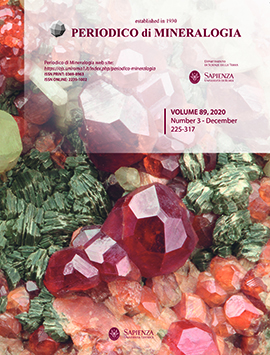Anomalous chromite–ilmenite parageneses in the Chapesvara and Lyavaraka ultramafic complexes, Kola Peninsula, Russia
Keywords:
ultramafic rocks, Cr–Ti mineralization, chromite–ilmenite association, zonation of chromian spinels, Chapesvara complex, Lyavaraka complex, Serpentinite Belt, Kola Peninsula, RussiaAbstract
The Serpentinite Belt of the Kola Peninsula, Russia, contains a string of dislocated bodies of fairly fresh to variously serpentinized dunite, harzburgite and orthopyroxenite. We focus here on the association of chromian spinel and ilmenite in the Chapesvara-I and -II ultramafic bodies, which occur close the Pados-Tundra layered complex. On the basis of the mineral compositions obtained, Chapesvara-I and -II belong to a single complex that crystallized in a subvolcanic setting. The first generation of chromite is relatively enriched in Mg and Zn in its core, and is free of inclusions. Oddly, manganese is decoupled from Zn, as it shows the expected rimward increase. The second generation of chromite is relatively poor in Mg and full of included clinochlore, interpreted to have crystallized from trapped aqueous fluid, similar to clinochlore in the laurite–clinochlore intergrowths hosted by grains of magnesiochromite–chromite at Pados-Tundra. The late buildup in the geikielite component of ilmenite, documented in both the Chapesvara and Lyavaraka complexes, is attributed to the progressive buildup of oxygen in the late melt owing to the preferential loss of hydrogen during crystallization.Downloads
Published
2020-08-31
Issue
Section
MINERALOGY and CRYSTALLOGRAPHY


